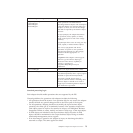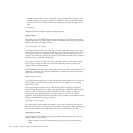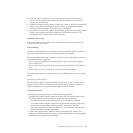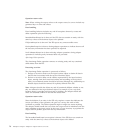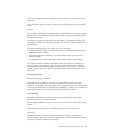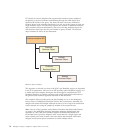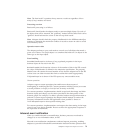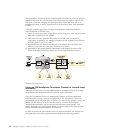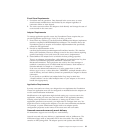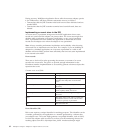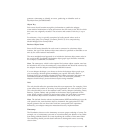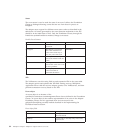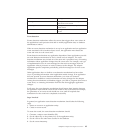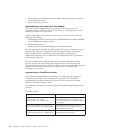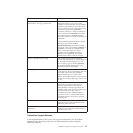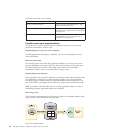Event Store Requirements
1. Event data must be persistent. Once detected in the event store, an event
should remain available there until deleted by the adapter regardless of
connection failure or time elapsed.
2. The event store must allow the adapter to both identify and change the state of
event records in the event store.
Adapter Requirements
To manage application-specific events, the Foundation Classes require that you
provide application-specific logic, if any. To do this, you must:
1. Ensure that any subclass of com.ibm.j2ca.base.WBIResourceAdapter implements
interface com.ibm.j2ca.WBIPollableResourceAdapter. This interface allows the
Foundation Classes to acquire an EventStore implementation that specifically
reflects the EIS application.
2. Provide an implementation of the
com.ibm.j2ca.extensions.eventmanagement.EventStore interface. This interface
allows the Foundation Classes to manage events in the store without requiring
specific knowledge of how and where the event store is implemented.
3. Extend WBIActivationSpecForXid to include the base polling properties.
There is an alternate ActivationSpec, called WBIActivationSpecForPooling, that
contains two additional properties; Minimum connections, and
MaximumConnections. These properties are used by the event manager to
establish a connection pool of EventStoreWithXid instances. Each instance of
EventStoreWithXid is treated as a ″connection″.
If the user sets MaximumConnections to a value greater than 1, and the
delivery type is set to a value other than ″ORDERED″, multiple threads will be
used in delivery, and each delivery thread can potentially be assigned a discrete
connection.
If you decide to use WBIActivationSpecForPooling, keep in mind that
″createEventStore″ can be called multiple times on your adapter, so be sure to
handle this appropriately.
Application Requirements
In many cases–and even when your adapter does not implement the Foundation
Classes–an application must also be configured or modified before the adapter can
use the event-notification mechanism.
Modifications to the application might include setting up a user account in the
application, creating an event store and event table in the application database,
inserting stored procedures in the database, or setting up an inbox. If the
application generates event records, you might need to configure their text. You
might also need to configure the adapter to use the event-notification mechanism.
For example, a system administrator might need to set adapter-specific
configuration properties to the names of the event store and event table.
Assured once-and-once-only event delivery
XA transactions support once-and only-once event delivery.
Assured once-and only-once delivery is implemented with an XAResource. The
XAResource keeps track of transaction IDs in the event table. The event table
contains an XID (string) field. The adapter queries and updates that XID field.
WebSphere Adapter development overview 81



